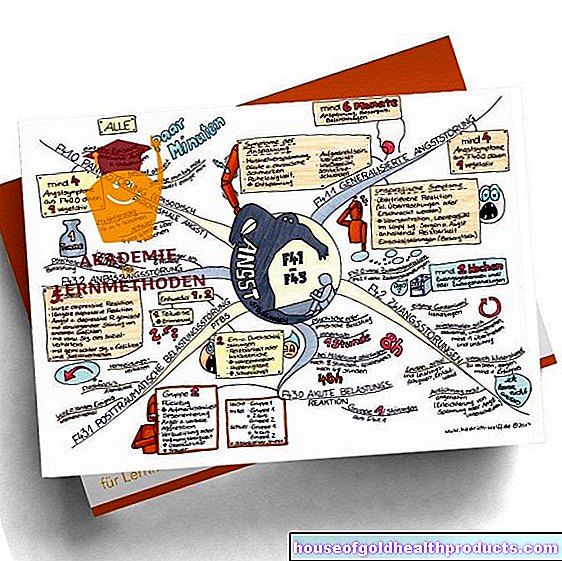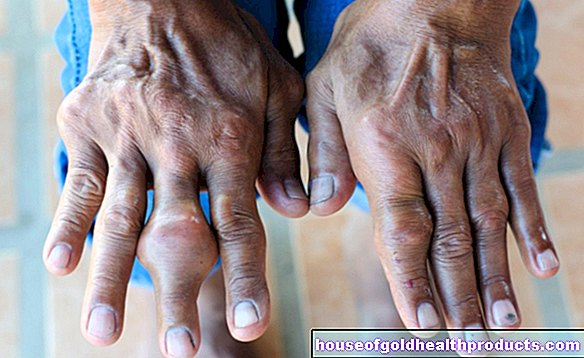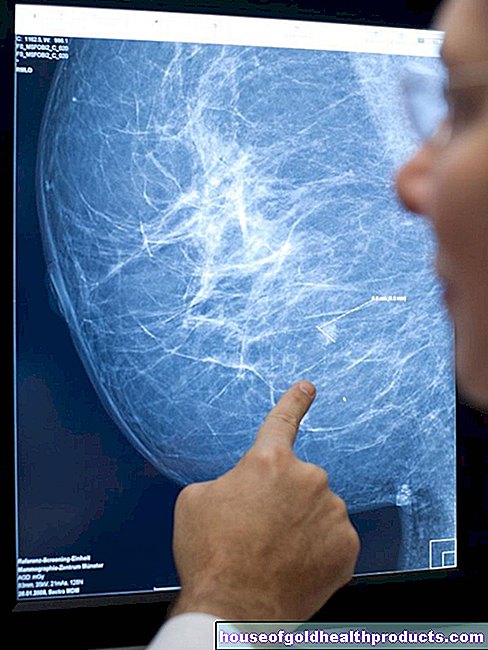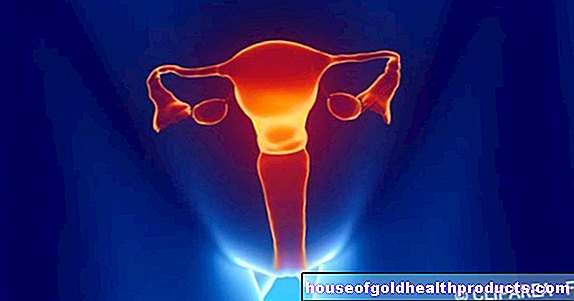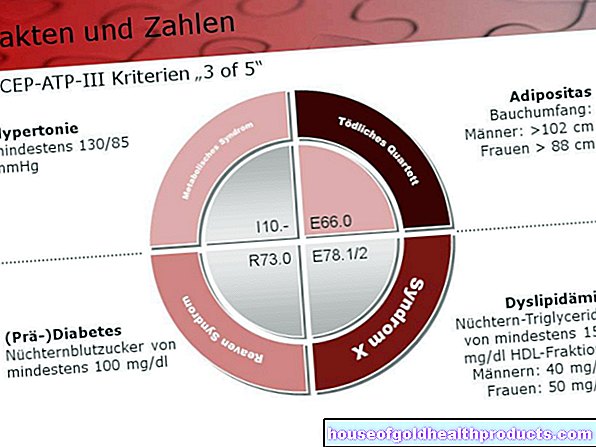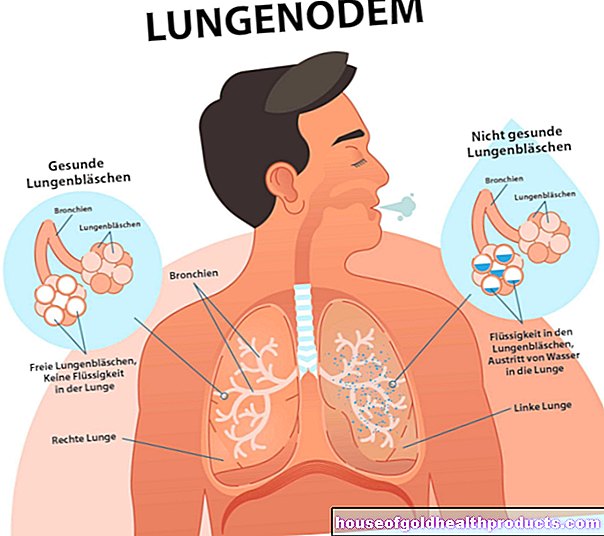Whiplash
Fabian Dupont is a freelance writer in the medical department. The human medicine specialist is already doing scientific work in Belgium, Spain, Rwanda, the USA, Great Britain, South Africa, New Zealand and Switzerland, among others. The focus of his doctoral thesis was tropical neurology, but his special interest is international public health and the comprehensible communication of medical facts.
More about the experts All content is checked by medical journalists.Whiplash (cervical spine distortion) is a combination of various complaints that often arise after car accidents. It is characterized by severe headache and neck pain within the first three days after an impact accident. The symptoms usually improve on their own after a while, but in some cases they persist and are difficult to treat. Find out everything about whiplash here.
ICD codes for this disease: ICD codes are internationally recognized codes for medical diagnoses. They can be found, for example, in doctor's letters or on certificates of incapacity for work. S13

Whiplash: description
The term "whiplash" summarizes several symptoms that typically arise from sudden acceleration and deceleration of the head in relation to the body. One speaks here of an acceleration-decelereration mechanism.
If the head is overstretched suddenly in this way, it especially strains the muscles and ligaments in the cervical spine (Cervical spine). That is why the medical term for whiplash is “cervical spine distortion”, and sometimes one also reads about a cervical spine trauma or a whiplash trauma.
The external application of force in a whiplash injury leads to strains, compression and overstretching of muscles and ligaments. Injuries to the bones or nerves are the exception.
Whiplash is not a rare diagnosis and is the most common complication after car accidents. Those affected usually complain of headache and neck pain after accidents, but in addition to muscle pain and tension, a few other symptoms are possible.
Whiplash: Symptoms
After the triggering event, it usually takes a few hours before the first symptoms appear. Typical are then increasing headache and neck pain as well as strong muscle tension, which causes a stiff neck. Above all, this spasmodic head position is found to be very uncomfortable by many patients. In some cases, the symptoms also radiate to the shoulder, back, jaw or mouth area. The symptoms of whiplash initially increase and reach their maximum after one to three days. After that, they usually subside again.
In the context of whiplash, general complaints such as nausea, dizziness, whistling in the ears (tinnitus), difficulty concentrating and tiredness can occur. They are also mostly only temporary.
Whiplash: Complications
Whiplash is uncomfortable, but most of the time it is harmless. In rare cases, however, complications can arise. This includes:
- Nerve injuries leading to tingling sensation, abnormal sensation, or paralysis of the face-; Shoulder or arm area
- unconsciousness
- Loss of memory for the period immediately before or after the accident event
- Severe nausea with vomiting
- Damage to the bony cervical spine, especially vertebral fractures
- Injuries to the spinal cord, possibly paraplegia
- Visual disturbance if the internal carotid, a specific vessel, has been damaged
- Simultaneous traumatic brain injury
With some of these complications it is debatable whether one can still speak of whiplash at all. Because vertebral fractures, nerve / spinal cord damage and other serious injuries are specially classified and actually not counted as whiplash.
Nevertheless, a common international classification (Québec classification) divides whiplash injuries into four degrees of severity, of which degree four also includes fractures of the cervical spine. However, some experts are calling for this grade to be deleted.
Whiplash: long-term effects
Whiplash is usually resolved after a short time. In some cases, however, the symptoms can last for months or even years. Such a chronification occurs in particular in people who had previous damage to the cervical spine before the whiplash injury. Even if bones or nerves are damaged in the course of the cervical spine, this delays healing or leads to permanent damage.
Whiplash: causes and risk factors
By far the most common cause of whiplash is an impact accident. The seat belt fixes the upper body, but not the head. After sudden braking while driving, the head moves forward unchecked compared to the upper body. The muscles and ligaments in the area of the cervical spine absorb the movement, which means that large forces act on these structures for a short time. Injuries are the result.
Whiplash injuries are not only caused by car accidents. They can also occur, for example, in martial arts, in a climbing fall or a riding accident - whenever the head accelerates in rapid succession and is then caught by your own muscles.
Certain factors make you more susceptible to whiplash injuries, a weak holding apparatus, for example, or existing previous damage such as herniated discs or narrowed nerve canals. Degenerative changes in the cervical spine, i.e. signs of wear and tear, also play an important role. These can be the result of accidents or diseases of the neck. Whiplash trauma patients with rheumatic diseases, for example, often have symptoms that limit their quality of life for months after the accident.
If the symptoms of whiplash become chronic, the individual pain perception and processing often play a role. Physical causes alone often cannot explain why the symptoms are more pronounced and / or of longer duration in some people.
Here psychological and psychosocial factors seem to play a role, such as fear of the consequences of an accident, general expectations or the culture. In Germany and Switzerland, for example, the diagnosis of whiplash is more common than in many other countries.
Whiplash: examinations and diagnosis
When a patient presents to the doctor with the typical whiplash symptoms, he or she will next ask whether the symptoms were preceded by an accident and how the accident happened. As a rule, the answer already gives rise to the diagnosis. He also asks the patient how severe the pain is and whether he has any other symptoms.
Basically, it is very important to make sure that there are no more serious injuries behind the complaints. Therefore, during the examination, the doctor checks, for example, whether there is any evidence of nerve damage: Does the patient feel tingling or numbness anywhere? Is the pain radiating?
If nerve damage is suspected, a neurologist is often called in. He can use special examinations to determine the possible nerve lesions more precisely and assess whether further treatment is necessary.
During the physical exam, the doctor also gently taps the spine. If there are bone fractures or chipped bones, this leads to increased pain. If this is not the case, he also moves the patient's head in all directions and observes which movements are restricted or painful.
If the doctor is unsure whether there may be a bony injury, an x-ray of the cervical spine can help with the diagnosis. Such injuries are the exception, however. Further examinations are rarely required, as the restrictions usually disappear on their own after a few days. If there is no noticeable improvement for weeks, you can use magnetic resonance imaging (MRI), which shows muscles and ligaments in detail.
It is also important that the doctor identifies factors in the conversation with the patient that stand in the way of a quick recovery. For example, it can counteract the fear of more serious injuries or negative expectations.
Whiplash: Treatment
Whiplash is usually treated symptomatically, i.e. pain relievers such as paracetamol, diclofenac or ibuprofen are used. Usually this can alleviate the symptoms. Those affected often describe heat pillows or patches as pleasant. In order to counteract tension and a stiff neck, the patient should also use targeted relaxation exercises and actively move his head. A ruff, on the other hand, is no longer considered useful.
Possible complications of whiplash such as bone or nerve injuries require special - often surgical - treatment. As long as it is unclear whether there are serious injuries after an accident, the head should always be kept still.
Even if loose massages of the neck muscles can help with mobilization, stronger osteopathic or chiropractic manipulations are not advisable because important structures in the neck could be injured.
In the case of long-term complaints from whiplash, the treatment concept has to be expanded. There are psychosomatic practices and clinics that specialize in chronic pain patients and the therapy of long-lasting, complex complaints. In addition to extended pain therapy using antidepressants, special behavioral and physical therapies, for example, can help alleviate the pain.
Whiplash: Prevention
Basically, a strong holding apparatus made up of ligaments and muscles protects against injuries. In particular, trained neck and head posture muscles can prevent whiplash or at least reduce its symptoms.
When it comes to preventing chronification, it is often helpful if the doctor explains to the patient in an understandable way what exactly happens in the event of a whiplash injury. Once the patient has understood that the symptoms are mostly harmless and usually go away again soon, this has a calming effect and promotes healing.
Whiplash: disease course and prognosis
As far as the duration of the whiplash trauma is concerned, one hears different statements from specialist circles. Basically, however, the majority of patients are completely symptom-free again after a while, most of them after a few days to weeks.
It is difficult to say how high the proportion of chronic courses is. Different studies on this subject come to different conclusions. The information ranges from less than 10 percent to over 40 percent.
However, experts agree that there are certain factors that make a chronic course of a cervical spine distortion more likely. In addition to negative psychosocial influences, these include severe headache and neck pain that occur immediately after the accident. Restricting neck mobility also has an unfavorable effect. It is all the more important to relieve pain and promote mobility as early as possible in patients with whiplash.
Tags: laboratory values alcohol therapies







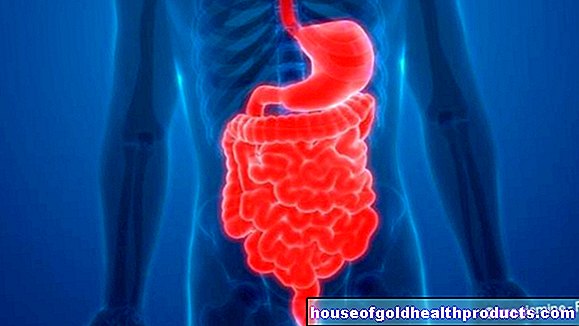






-kastanienmnnchen-und-perlenschweine.jpg)

